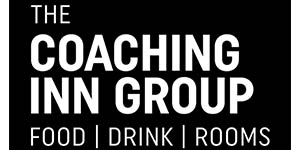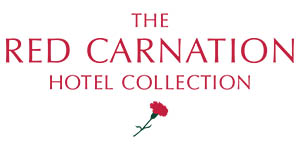The Global Study on Occupational Fraud and Abuse (GSOFA) paints a bleak picture. While the report focuses on occupational fraud as a whole, there are pertinent lessons contained within it that the hospitality sector can benefit from.
Before looking at the hospitality sector and how lessons can be learned from case studies, it is worth noting some of the key takeaways from the GSOFA report.
The biannual report, commissioned by the Association of Certified Fraud Examiners (ACFE), has been shedding light on the effects of occupational fraud since 1996. The report gathers and analyses data from thousands of fraud cases committed against organisations. It is the most complete source of information about the global scale, type, and cost of fraud that industry and organisations face.
For the year 2020, the last report published, the key findings include some grim statistics:
- Organisations annually lose 5% of revenue to fraud
- The average loss per fraud case equates to $1,509,000 US (£1,156,988)
- An average fraud case will take 14 months to detect
While the figures reflect occupational fraud as a whole, the hospitality sector is no less vulnerable than any other sector, and with some types of fraud, it faces increased vulnerabilities.
For instance, the report breaks down the studied cases into broad categories of fraud. The main three are Financial Statement Fraud, Corruption, and Asset Misappropriation.
The latter category should be of great interest to the hospitality sector. Asset Misappropriation, or theft in plain language, accounts for 86% of all detected fraud cases. Additionally, the largest slice of this category can be attributed to cash theft.
Theft of cash in hand, cash receipts, and “skimming” make up a large proportion of asset misappropriation. While the inevitable move towards a cashless business model will offer improved – but not foolproof – safeguards against this type of fraud in the future, for now, it remains a current and prevalent threat.
We will discuss common fraud threats in the hospitality sector in more detail a little further down.
Finally, the report determined that over 50% of frauds were committed by four departments. These are – operations (15%), accounting (14%), upper management (14%), and sales (11%). While these departments are endemic to many businesses, the high level of sales fraud will have relevance for the hospitality sector given the high level of the “asset misappropriation” type of fraud.
The Goals of the Report
The goals of the GSOFA report are important as they describe the “evolution” of typical fraud cases and the major factors that affect the perpetration and ultimately, detection, of most cases.
Understanding these factors and how they combine to allow fraud to occur allows us to learn crucial lessons in preventing future fraud.
The report breaks the goals down into five key areas: –
- Methods Used – The first step is to analyse and understand the methods used by the fraudsters
- Detection Means – This aspect looks at how the frauds were ultimately uncovered.
- The Organisation – The operating and management characteristics of the affected organisation
- The Perpetrators – Understanding the motives and character of the perpetrator
- The Outcome – Examining the aftermath including the scale of the fraud and the action taken against the perpetrator
The latter category threw up some interesting stats. Of the surveyed cases only 80% of the fraudsters faced internal discipline for their actions. Perhaps more surprisingly, was the fact that only 46% of cases were referred to law enforcement.
Uncovering Fraud
Understanding how fraud perpetrators are uncovered is a helpful exercise – The speed and method of detection, have a large bearing on the scale of the fraud.
Just as importantly, understanding this is also key to fraud prevention. There are always lessons that can be learned from past cases. These can help organisations put steps in place to increase the effectiveness of their own fraud prevention procedures.
The table below details the most common ways that fraud is uncovered.
| How Occupational Fraud is uncovered | Percentage |
| Tip | 43% |
| Internal Audit | 15% |
| Management Review | 12% |
| Other | 6% |
| Accidentally | 5% |
| Account reconciliation | 4% |
| External Audit | 4% |
| Document Examination | 3% |
| Surveillance | 3% |
| Law enforcement | 2% |
| IT controls | 2% |
| Confession | 1% |
The first takeaway from these figures is the sheer number of frauds that are uncovered by a tip-off. This can leave organisations with a delicate, but worthwhile, balancing act.
On one hand, fostering an atmosphere that cultivates a “tipping culture” will help to deter fraudulent behaviour. However, take it too far and the result can be a disgruntled and unhappy staff team. What is important though, given that tips are almost three times more prevalent than the next most common detection method, is a management culture that thoroughly evaluates tips should be established as a priority.
It is also useful to analyse tip detection in a little more detail, as this provides a picture as to where the tips are most likely to come from: –
- Employee – 50%
- Customer – 22%
- Anonymous – 15%
- Vendor – 11%
- Other – 6%
- Competitor – 2%
- Owner/Shareholder – 2%
Before we move on there is one more statistic in the above list that deserves more than just an honourable mention – It is interesting to note that the percentage of frauds detected by accident is greater than that of those detected by an external audit.
This should serve as a reminder of the importance of external audits as a fraud prevention measure. This statistic does not reflect badly on the process of external audits but is a reminder that not enough businesses are diligent in ensuring the necessary audit procedures are in place.
A Breakdown of Fraud in the Hospitality Industry
The hospitality sector has unique challenges to consider when it comes to where, when, and what, of fraud cases.
No department is immune to fraud. In hospitality, fraud occurs across the board. Housekeeping, food and beverage, management, reception, and even maintenance are all departments where frauds of both large and small scale have been uncovered.
The challenge that the hospitality industry faces can be summed up in one statement – Fraud is a numbers game!
The hospitality industry in the UK deals with millions of transactions daily many of them still cash-based. This can be a large temptation for a workforce that is often transient* and working at lower pay scales.
In hotels, restaurants, bars, theme parks, and casinos – the common theme amongst any hospitality outlet is the necessity to hold significant levels of stock and cash. This is difficult to police and is often neglected because resources put into fraud prevention and detection are difficult to measure when looking at returns on invested capital.
*According to YouGov statistics the hospitality sector has an annual staff turnover of 30%, double that of the UK average. A copy of the report can be downloaded here.
Common Types of Fraud in the Hospitality Sector
Below are the details of common types of fraud encountered in the hospitality sector: –
General Fraud
General fraud is at the smaller end of the scale, but it shouldn’t be underestimated as it can amount to a significant percentage of profits. What constitutes general fraud is difficult to precisely qualify but includes staff helping themselves to food and drink, passing staff discounts and allowances onto friends and family, and the abuse of customer promotions.
Theft
From towels to high-value beverages, the hospitality sector is alive with opportunities for unscrupulous staff to spirit stock and property out the back door.
Bars and restaurants make relatively easy targets for this especially when high staff turnover is accounted for. Poor stock control procedures and irregular stocktakes mean perpetrators of such crimes are often long gone by the time the theft is noticed.
On a larger scale, collusion between suppliers and staff who collude to produce phoney invoices, delivery notes, and receipts is another prevalent form of theft in the industry.
Skimming
Skimming is a form of theft that is so widespread in the hospitality sector, that it warrants a section of its own.
Skimming is a massive problem, as already noted, in the UK millions of cash transactions are concluded daily in the hospitality sector. This makes for fertile ground for skimming.
Common skimming techniques include not ringing drinks through the till and pocketing the money, voiding sales, and claiming guests left without paying.
One of the case studies that follow is a prime example of how large a problem skimming is in the sector.
Credit Card Fraud
Credit card fraud is an area where the hospitality sector has several vulnerabilities. Most of these pertain to staff unwittingly accepting payments using stolen cards or falling for cases of identity theft.
While fraud of this type cannot be attributed directly to “deliberate employee fraud” the scale of this type of fraud warrants an article in its own right and safeguards against this should be an uppermost priority for management throughout the sector.
However, employee misuse of corporate credit cards is common. This could be inflated expense reports and/or buying personal items with company cards. Strong audit procedures should easily catch this type of fraud but are often neglected.
Payroll Fraud
Payroll is another area where strong audit safeguards can save a whole load of trouble. Once again, the transient nature of the hospitality workforce makes this an area where the hospitality sector is exposed to increased vulnerabilities.
Temp workers that don’t exist, inflated overtime claims, and incorrect hourly rates, are all areas that have been fraudulently exploited in the hospitality industry.
Case Studies of Fraud in the Hospitality Sector
The types of fraud listed above constitute just a few of the risks that the hospitality sector is exposed to. This section looks at a few real-life examples of just how devastating fraud can be.
In true journalistic parlance, the names of the parties involved have been changed to protect the reputation of the companies.
Case Study One – Fleecing the Golden Goose
The “Golden Goose” operates three bars in central London and their case is a testament to how “skimming” can amount to more than just a few pounds missing from the till.
The management of the bars agreed to an audit not because they expected to find anything untoward, but rather to pander to the repeated requests of a head-office accountant they thought was being over-officious.
The audit was conducted on an “observation” basis over three nights and the results were startling. What was uncovered resulted in 7 of the 8 staff working in the three bars having their employments terminated with immediate effect.
This wasn’t a case of a lone employee slipping a couple of quid in their pocket each night. It was a coordinated, sophisticated, and long-running scam that involved multiple members of staff working as a team.
Between them, the employees were pocketing a staggering 20% of the bars takings each night. They hid the fraud by manipulating the amount of post-mix drinks and using this to create stock surpluses.
For example, one method they used was to pocket a customer’s money when they ordered a draft beer. The stock shortfall that this caused was then subsequently covered by not entering post-mix sales into the till. Once enough value of these non-sales was accumulated, they were entered into the till as a sale of beer.
Case Study Two – Misguided Trust
This case study can be used as a prime example of why strong anti-fraud and audit procedures are necessary regardless of the level of trust an operator has in its staff.
The case centres on a single bar that was extremely and consistently busy, but was producing poor results at the same time. The operator first consulted with the management, the bar manager was trusted and had held the position for ten years, as such he was treated as being above reproach.
The manager was unable to account for the poor returns, so the operator asked for an audit to be carried out. The smoking gun was found when the audit team conducted a check on the till information without the knowledge of the staff.
What they found was that the manager, usually late at night, was conducting unusual transactions. These were orders that he corrected and issued refunds for, these were often cash but sometimes even directly to his own credit card.
Initially, the operator was reluctant to accept the evidence. But the manager admitted to stealing tens of thousands of pounds over 18 months once he was presented with the evidence. The fraudulent behaviour began after the manager accrued large debts as a result of his gambling addiction.
This case highlights the importance of removing decisions based on personal relationships from the equation. An external review that has no preconceptions about the personnel and the working methods is essential for an audit to be carried out with the required diligence.
Case Study Three – The Bookings Scam
A major hotel group uncovered this scam more by good fortune than good diligence. The scam was perpetrated by six employees who worked with a booking agent to take advantage of a loophole they had uncovered in the hotel group’s conference booking system.
The scam worked like this – The booking system paid commissions on bookings that had been made through third-party agents. In this case, the scammers altered the records so that bookings that had been made directly were marked as being made through the agent involved.
By the time the fraud was uncovered the scammers had stolen over £200,000 in bogus commission payments.
Despite the hotel group having audit procedures in place, the fraud was only uncovered when a former employee blew the whistle on the scammers.
In this instance, the two main perpetrators received jail sentences, the others were handed community service orders or suspended jail sentences. Amongst the people involved in the scam were the director of sales and the banqueting manager of the affected hotel.
How to Mitigate the Chances of Fraud
The scale of the problem is immense, but a few simple steps can greatly reduce the risk of falling victim to fraud.
- Audit Procedures – Proper audit procedures, carried out by auditors that understand the industry and the specific risks it faces are absolutely crucial.
- Communication – The chances of fraud occurring can be greatly reduced by fostering an atmosphere where staff are encouraged to view their concerns and trust that management will take what say seriously.
- Checking Procedures Regularly – We are living in a time where businesses and the way we do business are evolving rapidly. Anti-fraud procedures need to evolve at the same rate.
- Look Beyond the Paperwork – Due diligence goes deeper than just checking that everything is present and accounted for! Altered paperwork is endemic in many of the major frauds encountered in the hospitality sector.
Conclusion
Nobody likes to be a victim, unfortunately, if you operate in the hospitality sector, it is statistically a certainty that to one degree or another you have been scammed out of a percentage of your profits. Almost equally certain is the fact that this will always be the case.
However, with a little diligence, proper procedures, and a strong auditing system, the chances of being a victim of a scam of any meaningful size can be massively reduced.
Report published by Capcon Reality, a Capcon Limited business. Capcon specialises in compliance related services to the Hospitality & Leisure sector, helping businesses gain real-time visibility to improve strategic risk, make informed decisions, and increase profits.
T: +44 (0)1372 237 050
E: enquiries@capcon.co.uk























